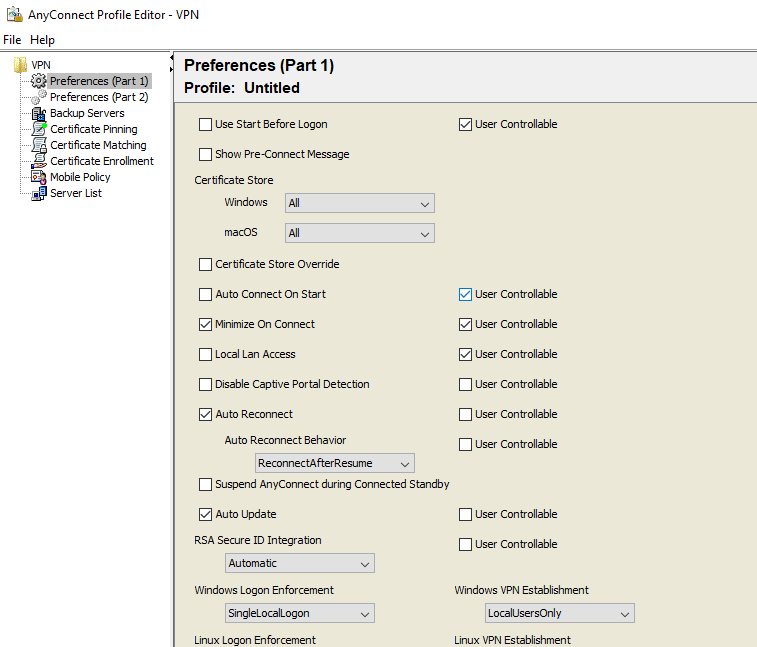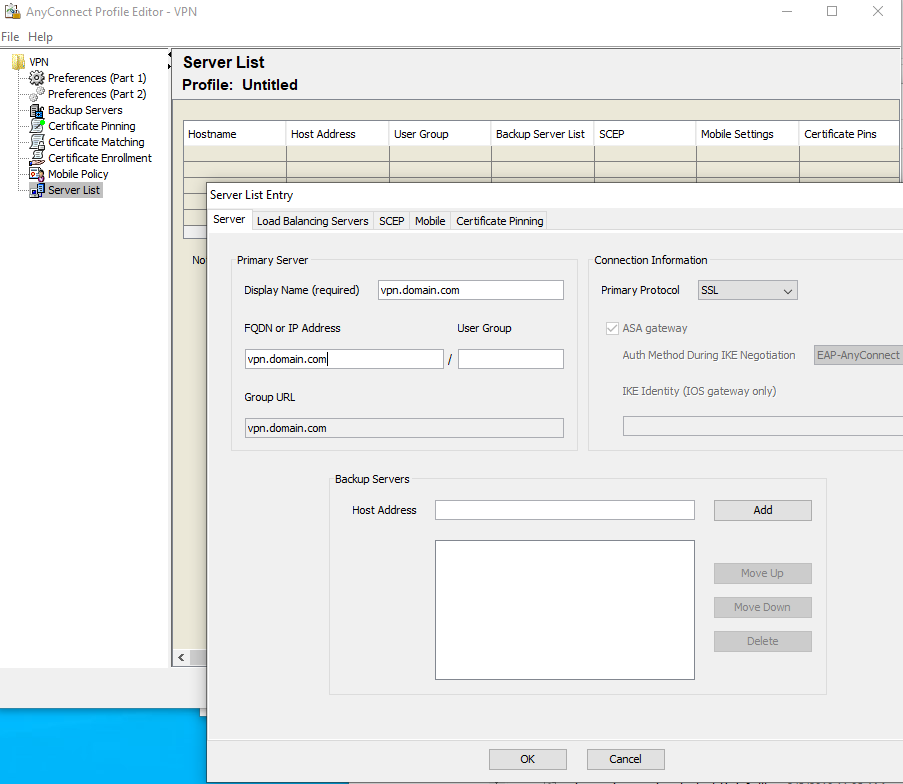One of my most popular blog posts is this where I talk about how to set your AnyConnect VPN client to remember the addresses of the various VPN URLs you use. I figured I would be good to revisit it since it’s been 5 years since I last talked about it to ensure things still worked the same way as they did back in 2014.
First, everything still works the same way on Windows 10. You go to C:\ProgramData\Cisco\Cisco AnyConnect Secure Mobility Client\Profile create a new xml file. I call mine Profile.xml and use the following format:
<?xml version=”1.0″ encoding=”UTF-8″?><AnyConnectProfile xmlns=”http://schemas.xmlsoap.org/encoding/” xmlns:xsi=”http://www.w3.org/2001/XMLSchema-instance” xsi:schemaLocation=”http://schemas.xmlsoap.org/encoding/ AnyConnectProfile.xsd”><ServerList><HostEntry><HostName>dcloud-rtp-anyconnect.cisco.com</HostName><HostAddress>dcloud-rtp-anyconnect.cisco.com</HostAddress></HostEntry><HostEntry><HostName>2dcloud-rtp-anyconnect.cisco.com</HostName><HostAddress>dcloud-rtp-anyconnect.cisco.com</HostAddress></HostEntry><HostEntry><HostName>3dcloud-rtp-anyconnect.cisco.com</HostName><HostAddress>dcloud-rtp-anyconnect.cisco.com</HostAddress></HostEntry></ServerList></AnyConnectProfile>
Save it and restart your client and it will look like this:

There is another method I’ve found and this involves some additional software. First, from software.cisco.com you have to install the Profile Editor (Windows), you only need to enable the Cisco AnyConnect Profile Editor. Once installed run the program.

Go to Server List > Add:

Go to File > Save As and save the XML file to same location C:\ProgramData\Cisco\Cisco AnyConnect Secure Mobility Client\Profile, restart the client and you should be all set.
~david